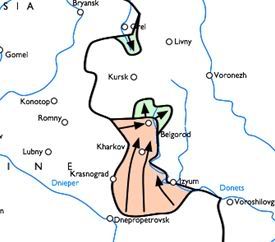I grew up next to an old gentleman in Northern Virginia, who had been working for the U.S. Government in some capacity unknown to me, since the 50's. I knew him only as Mr. Karl. He had been in the Waffen SS (I never asked which unit) and on occasion, would tell me "War Stories" about fighting what he referred to as the "Bolsheviks", in stifling heat and deadly cold - for 3 years. He told me about the Russian "Tank Destroyer" Dogs with explosive harnesses on, something I still have a hard time believing. He told me about the reckless advances he and his "Komrads" made throughout the war, destroying T-34's with hand-applied explosives early in the war, and with panzerfausts later on. He told of going into local battles that lasted for days at a time, where literally every man in his Company were either killed, missing or wounded. Mr. Karl spoke of advancing while using "panzers" as cover from machine gun fire, the armor commanders running up to and sometimes over or through the machine gun position, the infantry pouring into the breach created. There was a cavalier attitude of superiority and recklessness in battle among the Waffen SS and the armor and figures depicted in this diorama are meant to represent that.
* I'm a little worried about your layout though--just from a purely technical point; infantry in the wide open fields of Kursk would not have been "using a Stug for cover". In fact, most likely they would have been avoiding getting too close to any armor there at all.
- They did in fact use tanks for cover while advancing, I have not only read accounts stating this but have spoken to a Waffen SS Mann that was there. As far as wide open fields at Kursk, that is the general assumption but there were woodlots, villages with trees, water courses, ravines, etc. - the entire area was not steppe. Bottom line is, we can't see what is behind, beside or in front of this chunk of battlefield being represented in this diorama - for all we know, there may be blocking high ground preventing anything but immediate defense.
* In it, he stated: WOLFGANG K: "At Kursk, it was four days. And that was not very fun. The Germans faced for the first time, HUGE numbers of T-34s dug in – up to the turret. And that’s a bad deal – very bad. Number one, they are hard to see. Number two, they are hard to hit. And number three, they had already pre-determined distances to targets. “You know that they have to come through there, over that hill is 1500 meters and over there is 1200.” They were WAY in the advantage, way in the advantage. That was a sad affair. We really took a beating."
If you think about that, the Russin tanks were knocking the hell out of the Germans, and at pre-determined distances, I'm not so sure that the infantry would have wanted to be right next to them--and especially with a walking "incendiary bomb" in their midst?
- Perhaps in Herr Kloth's sector there were T-34's buried up to the turret, the Russians had adequate time to build a defense, three and four lines deep .... but one can't assume that this tactic was used throughout the entire region. I am certain that the Stug. and Infantry in this diorama would have used another tactic in their approach had there been the threat of long range fire from a 76mm or other gun. I agree, the thought of their cover being knocked out and blowing them up as well might have been a deterent - if that was the case. This is not the case.
* I've also read in other books that you didn't want to be next to tanks, as they tended to draw fire, and if they got hit, the concussion alone could kill a man. Of course, in street scene dios, figure placement might be a little more forgivable, but in a Field scene in the heat f battle, I think you might be stretching the plausibility just a bit?
- Would tanks draw fire less in a street setting? The question is not what would happen to the Infantry if their cover were hit - I know as well as you that it would be a mess. The question is, "Should we advance into this machine gun fire and trenchline behind a Sturmgeschutz that has made it all of the way up here without drawing anti-tank fire, or should we advance without it?" - I'm following the Stug....
*Might not necessarily want to call it "Kursk" in the name?
- This is a diorama depicting a scene on the battlefield during the Kursk Offensive -

As you can see, the offensive covered an extensive area. Kursk Dio. - W.I.P. - is just the generic subject title, the actual title of this diorama is "Clearing the Trench".
Thanks for your comments Doog, I can only hope that this has cleared up a few misconceptions.
razorboy